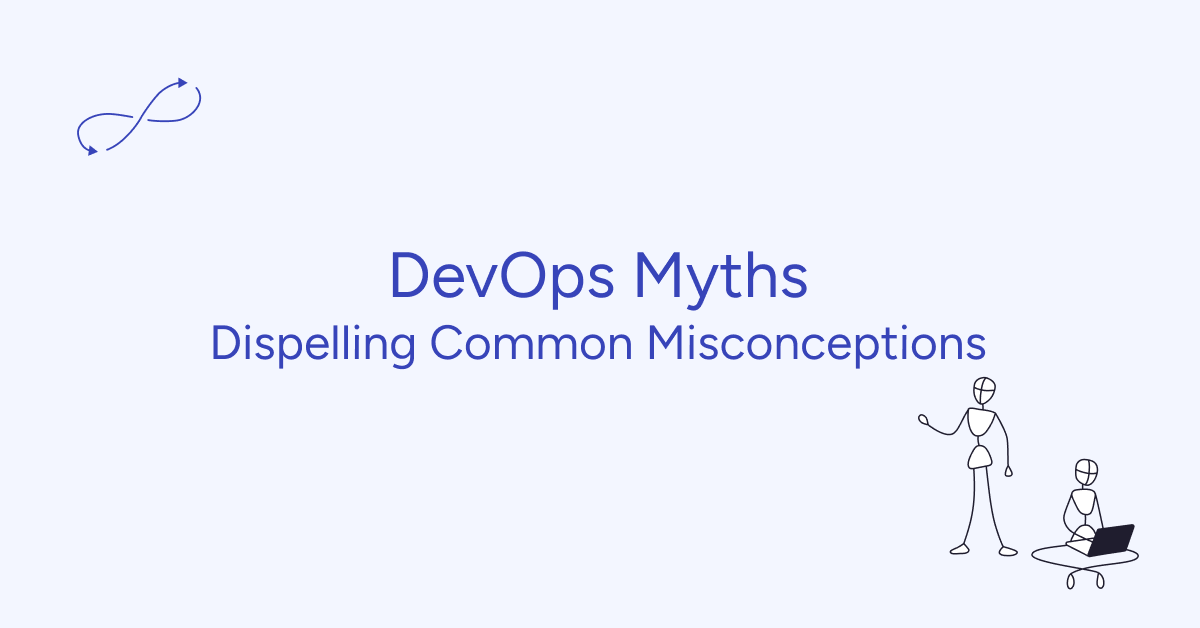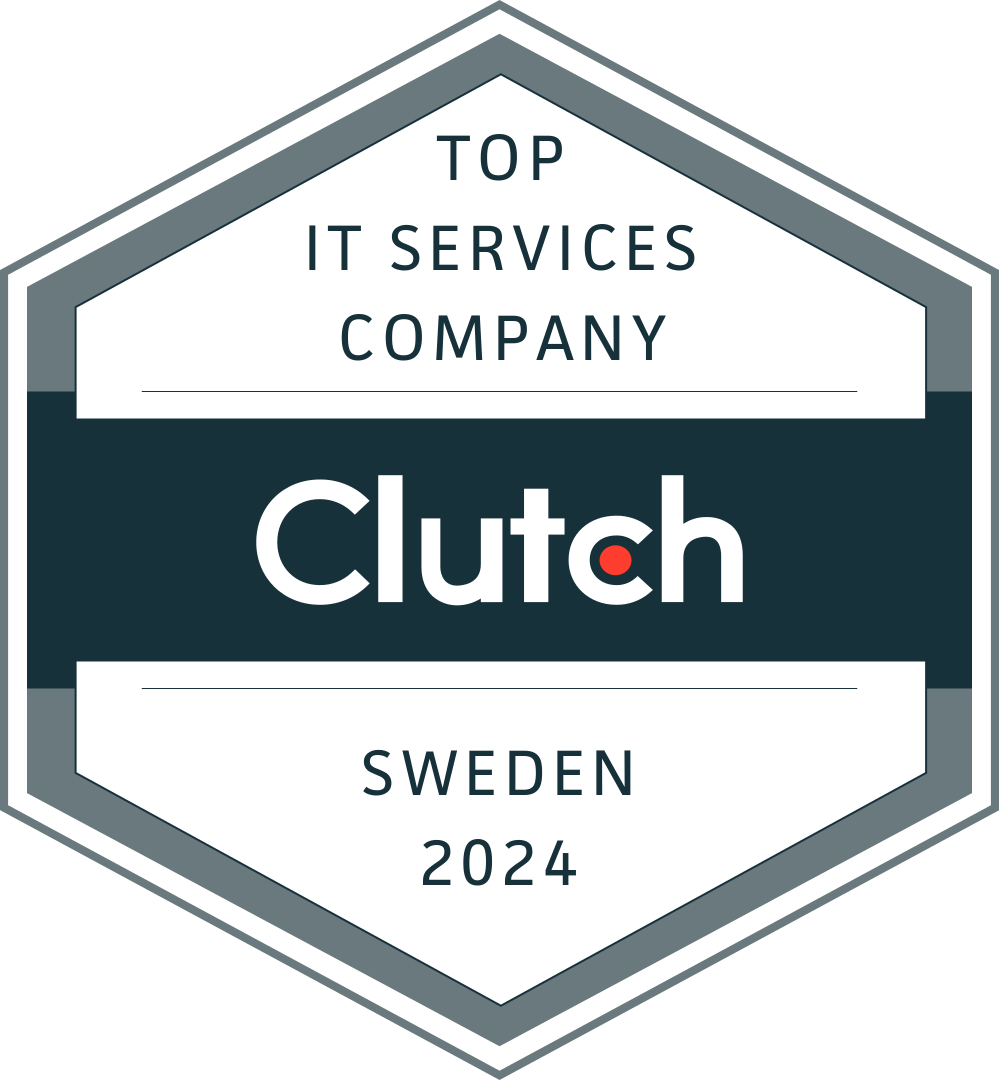
The concept of DevOps has taken the tech world by storm. While some are drawn to the field for its attractive salaries, true success in DevOps requires more than just technical skills.
This article dives deeper than the hype. I've spent years implementing DevOps across various companies, drawing on my prior experience as a system administrator and IT director. Now, as CTO & Co-founder of Gart Solutions, I want to share my insights on what it truly means to be a DevOps professional.
Who embodies the DevOps spirit?
The question "what is DevOps?" sparked this article. There's a misconception that DevOps is a specific job title, a collection of tools, or a separate developer department.
DevOps is a cultural shift, a way of working. It's a set of practices that foster collaboration between developers and system administrators. DevOps doesn't change core roles, but it blurs departmental lines and encourages teamwork. Its goals are clear:
Frequent software updates
Faster software development
Streamlined and rapid deployment
There's no single "DevOps tool." While various tools come into play at different stages, they all serve a common purpose.
Having interviewed DevOps candidates for over 5 years, I've observed a crucial gap: those who view DevOps as a job title often face challenges collaborating with colleagues.
Here's a real-life example: a candidate with an impressive resume came in. His short stints at previous startups (5-6 months each) raised concerns. He blamed his departures on unsuccessful ventures and a company where "nobody understood him." Apparently, developers used Windows, and his role was to "package" their code in Docker for the CI/CD pipeline. He spoke negatively about his colleagues and workplace, suggesting a lack of problem-solving skills.
A key question I ask all candidates is:
"What does DevOps mean to YOU?"
I'm interested in their personal understanding. This particular candidate knew the textbook definition but disagreed, clinging to the misconception of DevOps as a job title. This misunderstanding is the root of his struggles, and it's likely true for others with the same perspective.
Employers, drawn to the "magic" of DevOps, seek a silver bullet – a single person to create this magic. Applicants who view DevOps as a job title don't grasp that this approach leads to disappointment. Some might have just added "DevOps" to their resume to ride the trend or for the higher salary, without truly understanding the philosophy.
DevOps Methodology: Putting Theory into Practice
DevOps methodology isn't theoretical; it's about practical application. As mentioned earlier, it's a toolbox of practices and strategies used to achieve specific goals. These practices can vary significantly depending on a company's unique business processes, but that doesn't make one approach inherently better or worse. It's all about finding the right fit.
DevOps Philosophy: Capturing the Essence
Defining DevOps philosophy can be tricky. There's no single, universally accepted answer, likely because practitioners are so focused on getting things done that formalizing the philosophy takes a back seat. However, it's a crucial aspect with deep ties to engineering practices.
Those who delve deeply into DevOps often develop a sense of "spirit" or a holistic understanding of how all company processes interconnect.
Drawing on my experience, I've attempted to formalize some core principles of this philosophy:
DevOps is Integrated: It's not a separate entity; it permeates all aspects of a company's operations.
Company-wide Adoption: For DevOps to be successful, all employees should consider its principles when planning their work.
Streamlining Efficiency: DevOps aims to minimize the time spent on internal processes, ultimately accelerating service development and enhancing customer experience.
Proactive Problem-Solving: In simpler terms, DevOps encourages a proactive approach from every employee to reduce time wasted and improve the quality of the IT products we use.
These "postulates," as I call them, are a springboard for further discussion. They offer a starting point to grasp the core tenets of the DevOps philosophy.
The Heart of DevOps: Communication
Communication is the lifeblood of DevOps. Because it's a cultural shift and a set of practices, strong communication skills are even more important than technical knowledge for a DevOps engineer.
There's also a fascination with specific tools like Kubernetes. However, using a tool like Kubernetes everywhere, regardless of suitability, can be counterproductive. It's crucial to choose the right tool for the job. While Kubernetes offers advantages, maintaining a cluster can be more expensive than a traditional deployment scheme.
DevOps implementation isn't cheap; it needs to justify its cost through overall business benefits. DevOps engineers act as pioneers, introducing new methodologies and building processes within companies. Success hinges on continuous communication with employees at all levels – from entry-level team members to leadership. Everyone needs to understand the "why" behind DevOps practices for successful implementation.
DevOps engineers might also need to navigate resistance to change. For example, developers accustomed to managing their entire project infrastructure locally on powerful laptops may resist shifting to a more streamlined approach. This is where communication becomes crucial in explaining the benefits of new methods.
However, many teams readily embrace new tools and actively participate in the DevOps transformation. Regardless of the initial reception, clear communication between the DevOps engineer and the team is essential for a smooth transition.
DevOps: Not a One-Size-Fits-All Solution
DevOps isn't a magic bullet for every company. It's crucial to understand when it makes sense and when it doesn't.
Generally, small businesses with static websites or information services that don't directly drive customer satisfaction likely won't see a significant benefit from DevOps.
Here's a good rule of thumb: If a company's success hinges on the quality, availability, and targeted features of its IT products used for customer interaction, then DevOps becomes a strong consideration.
Take a bank, for example. They rely heavily on IT infrastructure for customer interactions, making them a prime candidate for DevOps adoption.
Company Size Isn't the Only Factor
Don't assume that large companies automatically need DevOps. Consider an automaker whose primary customer interaction happens through dealerships via email and phone. Their internal operations may be well-managed with traditional system management approaches, negating the need for a full-blown DevOps implementation.
However, company size doesn't always dictate the need for DevOps. Many small software companies thrive with the DevOps methodology because it allows them to compete effectively.
The Key Factor: IT Product Importance
The ultimate question is: how critical are your IT products to your company's success and customer satisfaction?
If software is your primary revenue driver, regardless of other products or services, then DevOps is likely a worthwhile investment. Online stores and mobile game apps are perfect examples.
Our Expertise at Gart Solutions
At Gart Solutions, we understand the transformative power of DevOps for businesses of all sizes. Our team of passionate DevOps engineers fosters a culture of knowledge sharing through internal training and workshops.
Here's a glimpse into our DevOps toolbox:
CI/CD Pipeline Automation: We leverage industry-leading tools to streamline your software builds, testing, and deployments, ensuring speed and efficiency.
Infrastructure Management: Our experts handle your infrastructure setup, maintenance, and optimization, allowing you to focus on core development activities.
Containerization with Kubernetes: We provide expertise in deploying and managing containerized applications using Kubernetes, offering scalability and portability.
Cloud Solutions: Our team helps you navigate the world of cloud computing, from migration strategies to ongoing cloud management, optimizing your cloud footprint and costs.
Security & Monitoring: We prioritize robust security measures throughout your development lifecycle, while implementing comprehensive monitoring to ensure optimal application performance.
We constantly evaluate and integrate new tools and techniques to ensure our clients have access to the most cutting-edge solutions. Our goal is to be your trusted partner, empowering you to achieve your business objectives through the power of DevOps.
In Conclusion: The Power of Communication and Collaboration
The journey to becoming a top-tier DevOps engineer hinges on a core skill: effective communication. DevOps is not a solo act; it's about fostering collaboration and breaking down silos. The most successful practitioners take the initiative to connect with colleagues, actively propose solutions, and embrace open discussions. Be prepared for ideas to evolve through team interaction – that's the magic of DevOps!
By continuously learning, proposing, and implementing improvements, you'll become an invaluable asset to your team and organization. This value will undoubtedly be reflected in your professional growth and compensation.

DevOps - it's just a marketing buzzword with no substance behind it, right? Or perhaps there's more to it than meets the eye. Is DevOps simply a collection of "correct" tools, or is it a specialized culture? And who exactly should be responsible for it, and what does a DevOps engineer entail?
In short, there are some misconceptions abound, some trivial, some deeply rooted in the minds of respected professionals.
Myth #1: DevOps Can Be Done by a DevOps Department or Engineer
To achieve proper DevOps, we hire DevOps engineers or create a DevOps department, and voila! We've got full-fledged DevOps in our company!
This sentiment is quite pervasive. Despite numerous materials explaining why there's no such thing as DevOps engineers or why creating a DevOps department isn't advisable, DevOps departments still emerge, and DevOps engineer vacancies continue to increase.
Here's a scenario I often encounter: a typical company where nothing much happens until the CEO or the board catches the "digital transformation" bug. It's a highly contagious disease usually contracted at conferences for CEOs or top management. Suddenly, terms like Agile, DevOps, digital, product, etc., start popping up in their heads. The CEO gathers the troops and says, "Guys, we need Agile, DevOps, digital, figure it out and make it happen."
In reality, it's not the CEO's task to delve into all of this. They've figured out, for instance, how to increase revenue, value streams, and realized that it correlates with these buzzwords.
Then the team starts brainstorming. They read about DevOps on Wikipedia: "A methodology that unifies developers, operations, and testing for continuous software delivery."
In their company, software delivery is continuous, deployments happen every three months, developers and sysadmins hang out together at bars - there's no issue with collaboration. So, they decide to rename some department to DevOps.
Ultimately, either the quality assurance department gets renamed to DevOps or the operations department - depending on the experience of the individuals involved. But what to do with that department if it's filled with quality/issue engineers? They need to be renamed to DevOps engineers too?
I regularly browse through DevOps job listings because we and our clients are looking for engineers. You can check out job search websites yourself; they're all so diverse!
There's no strict standardization or typification: from people setting up pipelines on Jenkins to testers writing automation scripts; from specialists deploying on AWS to those configuring monitoring, rolling out software, etc. Every possible IT profession is labeled as a DevOps engineer.
The exception is small companies genuinely producing digital products with real continuous software delivery. They seek people who can do it all because it's hard to pinpoint a specific qualification. So, they simply advertise for a DevOps engineer position listing everything - Jenkins, Ansible, Chef, Docker, Kubernetes, Silex, Prometheus.
The most crucial aspect of needing DevOps is to create value flow throughout the company. DevOps should cover everything from analytics to actual operations. It's not a separate profession or a designated role; it's merely a concept that facilitates rapid digital product delivery.
The first mention of this term dates back to 2009 when Patrick Debois said at a conference: "We've started using a new approach. We're now producing digital products, and we have a problem - the old ways aren't working. I alone can't solve it. I invite everyone to join the community to figure out how to live with this. Let's call this problem DevOps."
DevOps is the solution to the problem of producing digital products. It's a methodology. Calling an individual by that term is incorrect.
If you're seeking a DevOps engineer, consider why you need one. It's better to specify a particular skill set and look for it in the market than hire an ambiguous specialist.
For the financially prudent: typically, a system administrator with Docker knowledge differs from a DevOps engineer with Docker knowledge not in skills but in price.
Myth #2: DevOps is about Hiring Jack-of-All-Trades Specialists
Let me share my interpretation of where this problem stems from. When the whole DevOps saga was just beginning, indeed, all the work was done by jack-of-all-trades specialists. For example, one person would build the delivery pipeline, set up monitoring, and so forth. I started from the same point and did everything myself because I didn't know whom to delegate tasks to: I needed to research here, tweak there, and implement something else. As a result, I became a jack-of-all-trades specialist who configured Linux, wrote Chef scripts, integrated with Zabbix API, and more. I had to do it all.
But in reality, this doesn't work.
Productivity:
18 jack-of-all-trades craftsmen capable of making a pin each produce 360 pins per day.
18 craftsmen divided into 18 specializations produce 48,000 pins.
This is a well-known example of production increase in a pin factory from Adam Smith's book. In reality, the story about these pins wasn't invented by him but rather borrowed from a British encyclopedia.
This logic still holds true today. When I hear that specialists should be cross-functional, I actually think that teams should be cross-functional, but certainly not individuals. Otherwise, we end up needing to produce 48,000 pins but simply don't have enough people.
In the book "The Phoenix Project: A Novel about IT, DevOps, and Helping Your Business Win," there's a story about Brandon, who does everything in the company, and everything bottlenecked around him. This is precisely the story of a talented jack-of-all-trades specialist.
But then the question arises - if not hiring a jack-of-all-trades specialist, then whom to hire? There's no clear answer to this question. We don't specify specific specializations for people working in DevOps.
I'll try to outline these roles broadly and invite you to join this work because without role division, we'll always be talking about jack-of-all-trades specialists.
DevOps, other roles:
Developer with an understanding of architecture and production software work (writes tests and infrastructure code)
What sets this developer apart from a typical university graduate? A developer from a typical university can write algorithms - and that's about it. A DevOps developer not only can write descriptions but also knows how these descriptions come to life.
I came to IT from radio electronics, and what amazed me here was that people think that a schematic diagram is a working product. An engineer in radio electronics doesn't have such a misconception, but in IT - it exists.
We need developers who know that a schematic diagram is not a working product. There are few of them; they come from related fields - like radio electronics.
Infrastructure Engineer (writes bindings for infrastructure, provides a platform for developers)
This role is so rich that it can be further broken down. Essentially, it includes a product owner manager who owns the continuous delivery platform product and the individual competencies of people who build this delivery platform. But this is for large companies.
For small companies, it's simpler. This is an engineer who is well-versed in configuration management, knows Docker, Kubernetes, can create a continuous software delivery process based on them, and hand it over to the developer.
Developer of infrastructure services (DBaS, Monitoring as a Service, Logging as a Service)
These are services provided to developers as a product. Note that you can go to Amazon and buy these individual services. Amazon can be considered a DevOps role model; that is, what they sell can be grown internally.
Release Manager (manages the process and dependencies)
This isn't the person who builds the build. They manage dependencies, versions, facilitate team agreements on integration environments, oversee the continuous delivery pipeline, and so forth.
They are the fairy who endows your team with magic so they can continuously deliver software.
Myth #3: We've Been Doing DevOps Since 1995
"We've been developing our corporate IT system for many years and have been releasing every week. Your DevOps is just a bunch of millennials in jeans with rolled-up cuffs who came along and renamed what we've been doing for years."
This myth stems from a misunderstanding of what DevOps truly entails and a misinterpretation of the time-to-market concept. Some organizations believe that because they release software frequently, they are already practicing DevOps. They may view DevOps as simply a rebranding of their existing processes rather than a fundamental shift in approach.
The reality is that DevOps is not just about the frequency of releases; it's about the entire software delivery lifecycle, from development to operations, being optimized for speed, efficiency, and collaboration. While releasing every week is a positive achievement, true DevOps involves more than just release frequency.
One of the key principles of DevOps is continuous improvement, which means constantly refining and optimizing processes to deliver value to customers faster and more reliably. It's about breaking down silos between development, operations, and other teams, fostering a culture of collaboration and shared responsibility.
Another misconception related to this myth is the idea that DevOps only becomes relevant during incidents or emergencies. While it's true that DevOps practices can help teams respond more effectively to incidents, they are equally important during normal operations. DevOps is about building resilience and reliability into the software delivery process from the outset, not just reacting to problems as they arise.
Ultimately, DevOps is about delivering software that meets customer needs quickly and efficiently. It requires a mindset shift and a commitment to continuous improvement, rather than simply sticking to existing processes and routines.
While frequent releases are a positive step, true DevOps involves a holistic approach to software delivery that goes beyond release frequency and encompasses the entire lifecycle of software development and operations. It's not just about what you've been doing for years; it's about how you can do it better.
DevOps Practices for TTM (Time-to-Market)
I've outlined some core DevOps practices focused solely on time-to-market, without which continuous feedback from your customers and the market is unattainable.
Release Strategies (blue-green deployments, canary releases, A/B testing):It sounds good and quite simple — let's roll out to 0.1% of users. But to do this requires monumental effort, such as transitioning from a monolithic architecture to a microservices architecture.
Continuous Monitoring:This is monitoring akin to testing, where developers describe, in code, what needs to be monitored in production. Afterward, the artifact, along with the description of what needs monitoring, is pushed through the pipeline, and everything is added to monitoring at every stage of continuous delivery. This allows a real look at what's happening with the application.When you've deployed to 0.1%, you can understand if the software is working as intended or if something is amiss. It's pointless to deploy to 0.1% if you don't know what's happening with the software.
End-to-End Logging:This is when, via an ID, you can see in the system how customer data has changed: they come in through the frontend, then to the backend, then to the queue, where they're picked up by an asynchronous worker. The asynchronous worker then goes to the database, changes the cache state, and all of this is logged. Without this, figuring out what happened in the system is impossible, and deploying to 0.1% is futile.Imagine you decide to deploy some new software to all 2,000 attendees of the "International Internet Technologies" festival, but you lack end-to-end logging. These 2,000 people complain that it's not working. You ask them what's wrong because from your perspective, it's like some kind of poltergeist. It's a futile endeavor.
Automated Tests (as a form of agreement between teams):Automated testing has long been known and used for improving software quality. However, automated tests need to be approached differently — as a form of agreement between teams. Instead of resolving numerous small issues in the software during integration, teams agree that each team writes automated tests and addresses these issues at the stage of developing individual modules, elements, etc. Writing automated tests is a separate story.
All these described components — DevOps practices for TTM — require a lot of time and effort if you're not starting from scratch, but rather, for example, rewriting a monolith. However, without them, achieving a high time-to-market is impossible.
Myth 4: DevOps is all about the "right" tools
There's a common belief that DevOps can be achieved simply by adopting the "right" tools. It's like assembling a toolkit with Kubernetes, Ansible, Prometheus, Mesosphere, and Docker, and expecting instant DevOps success.
However, this approach often leads to disappointment. Organizations might install Kubernetes, for example, use it for a while, and then realize it's not as effective as they hoped. They find themselves grappling with too many components, encountering glitches, and realizing that manual processes might have been simpler.
While powerful tools are certainly valuable, they're just one piece of the DevOps puzzle. True DevOps isn't just about the tools you use; it's about the cultural and process changes within your organization.
That said, there are indeed tools specifically designed for DevOps, created by the community that emerged around the DevOps movement. These tools come with not only installation instructions but also comprehensive guides on how to leverage them effectively.
For instance, when you install Git, you don't need to understand the intricacies of hashing algorithms. Similarly, with Kubernetes, it's more important for engineers to understand how to work with it rather than the internal workings of the platform.
While the "right" tools are important, they're not a silver bullet for DevOps success. It's crucial to focus on building a culture of collaboration, automation, and continuous improvement alongside tool adoption.
Myth #5: DevOps is only for large organizations
DevOps can benefit businesses of all sizes. Smaller companies may even find it easier to adopt a DevOps culture due to their agility and fewer layers of bureaucracy. DevOps principles like continuous integration and delivery can be implemented incrementally, even with limited resources.
Myth #6: DevOps is only for startups or tech companies
While DevOps originated in the tech industry, it is not limited to startups or tech companies. DevOps practices can be adopted by organizations of any size and across various industries to improve software delivery and operational efficiency.
Myth #7: DevOps requires a complete overhaul of your workflow
DevOps is about continuous improvement, not starting from scratch. You can begin by focusing on small changes that promote collaboration and automation. Gradually, your development and operations processes will become more efficient and streamlined.
Myth #8: DevOps replaces traditional IT roles
DevOps does not replace traditional IT roles like developers, system administrators, or quality assurance professionals. Instead, it promotes cross-functional collaboration, shared responsibilities, and a culture of continuous learning and improvement.
Myth #9: DevOps is a one-time implementation
DevOps is a cultural shift, not a one-time fix. It requires ongoing commitment and adaptation. As your organization and technology landscape evolve, your DevOps practices will need to evolve as well.
Myth #10: DevOps is only for cloud-native or microservices architectures
DevOps practices can be applied to various types of software architectures, including monolithic, service-oriented, or cloud-native applications. The principles of collaboration, automation, and continuous improvement are relevant regardless of the underlying architecture.
By understanding and addressing these myths, organizations can better embrace DevOps as a cultural shift and a set of practices that foster collaboration, automation, and continuous improvement in software delivery and operations.

You see, building software is a lot like cooking your favorite dish. Just as you add ingredients to make your meal perfect, software developers consider various elements to craft software that's top-notch. These elements, known as "software quality attributes" or "non-functional requirements (NFRs)," are like the secret spices that elevate your dish from good to gourmet.
Questions that Arise During Requirement Gathering
When embarking on a software development journey, one of the crucial initial steps is requirement gathering. This phase sets the stage for the entire project and helps in shaping the ultimate success of the software. However, as you delve into this process, a multitude of questions arises
1. Is this a need or a requirement?
Before diving into the technical aspects of a project, it's essential to distinguish between needs and requirements. A "need" represents a desire or a goal, while a "requirement" is a specific, documented statement that must be satisfied. This differentiation helps in setting priorities and understanding the core objectives of the project.
2. Is this a nice-to-have vs. must-have?
In the world of software development, not all requirements are equal. Some are critical, often referred to as "must-have" requirements, while others are desirable but not essential, known as "nice-to-have" requirements. Understanding this distinction aids in resource allocation and project planning.
3. Is this the goal of the system or a contractual requirement?
Requirements can stem from various sources, including the overarching goal of the system or contractual obligations. Distinguishing between these origins is vital to ensure that both the project's vision and contractual commitments are met.
4. Do we have to program in Java? Why?
The choice of programming language is a fundamental decision in software development. Understanding why a specific language is chosen, such as Java, is essential for aligning the technology stack with the project's needs and constraints.
Types of Requirements
Now that we've addressed some common questions during requirement gathering, let's explore the different types of requirements that guide the development process:
Functional Requirements
Functional requirements specify how the system should function. They define the system's behavior in response to specific inputs, which lead to changes in its state and result in particular outputs. In essence, they answer the question: "What should the system do?"
Non-Functional Requirements (Constraints)
Non-functional requirements (NFRs) focus on the quality aspects of the system. They don't describe what the system does but rather how well it performs its intended functions.
Source: https://iso25000.com/index.php/en/iso-25000-standards/iso-25010
Functional requirements are like verbs
– The system should have a secure login
NFRs are like attributes for these verbs
– The system should provide a highly secure login
Two products could have exactly the same functions, but their attributes can make them entirely different products.
AspectNon-functional RequirementsFunctional RequirementsDefinitionDescribes the qualities, characteristics, and constraints of the system.Specifies the specific actions and tasks the system must perform.FocusConcerned with how well the system performs and behaves.Concentrated on the system's behavior and functionalities.ExamplesPerformance, reliability, security, usability, scalability, maintainability, etc.Input validation, data processing, user authentication, report generation, etc.ImportanceEnsures the system meets user expectations and provides a satisfactory experience.Ensures the system performs the required tasks accurately and efficiently.Evaluation CriteriaUsually measured through metrics and benchmarks.Assessed based on whether the system meets specific criteria and use cases.Dependency on FunctionalityIndependent of the system's core functionalities.Dependent on the system's functional behavior to achieve its intended purpose.Trade-offsBalancing different attributes to achieve optimal system performance.Balancing different functionalities to meet user and business requirements.CommunicationOften involves quantitative parameters and technical specifications.Often described using user stories, use cases, and functional descriptions.
Understanding NFRs: Mandatory vs. Not Mandatory
First, let's clarify that Functional Requirements are the mandatory aspects of a system. They're the must-haves, defining the core functionality. On the other hand, Non-Functional Requirements (NFRs) introduce nuances. They can be divided into two categories:
Mandatory NFRs: These are non-negotiable requirements, such as response time for critical system operations. Failing to meet them renders the system unusable.
Not Mandatory NFRs: These requirements, like response time for user interface interactions, are important but not showstoppers. Failing to meet them might mean the system is still usable, albeit with a suboptimal user experience.
Interestingly, the importance of meeting NFRs often becomes more pronounced as a market matures. Once all products in a domain meet the functional requirements, users begin to scrutinize the non-functional aspects, making NFRs critical for a competitive edge.
Expressing NFRs: a Unique Challenge
While functional requirements are often expressed in use-case form, NFRs present a unique challenge. They typically don't exhibit externally visible functional behavior, making them difficult to express in the same manner.
This is where the Quality Attribute Workshop (QAW) comes into play. The QAW is a structured approach used by development teams to elicit, refine, and prioritize NFRs. It involves collaborative sessions with stakeholders, architects, and developers to identify and define these crucial non-functional aspects. By using techniques such as scenarios, trade-off analysis, and quality attribute scenarios, the QAW helps in crafting clear and measurable NFRs.
Good NFRs should be clear, concise, and measurable. It's not enough to list that a system should satisfy a set of NFRs; they must be quantifiable. Achieving this requires the involvement of both customers and developers. Balancing factors like ease of maintenance versus adaptability is crucial in crafting realistic performance requirements.
There are a variety of techniques that can be used to ensure that QAs and NFRs are met. These include:
Unit testing: Unit testing is a type of testing that tests individual units of code.
Integration testing: Integration testing is a type of testing that tests how different units of code interact with each other.
System testing: System testing is a type of testing that tests the entire system.
User acceptance testing: User acceptance testing is a type of testing that is performed by users to ensure that the system meets their needs.
The Impact of NFRs on Design and Code
NFRs have a significant impact on high-level design and code development. Here's how:
Special Consideration: NFRs demand special consideration during the software architecture and high-level design phase. They affect various high-level subsystems and might not map neatly to a specific subsystem.
Inflexibility Post-Architecture: Once you move past the architecture phase, modifying NFRs becomes challenging. Making a system more secure or reliable after this point can be complex and costly.
Real-World Examples of NFRs
To put NFRs into perspective, let's look at some real-world examples:
Performance: "80% of searches must return results in less than 2 seconds."
Accuracy: "The system should predict costs within 90% of the actual cost."
Portability: "No technology should hinder the system's transition to Linux."
Reusability: "Database code should be reusable and exportable into a library."
Maintainability: "Automated tests must exist for all components, with overnight tests completing in under 24 hours."
Interoperability: "All configuration data should be stored in XML, with data stored in a SQL database. No database triggers. Programming in Java."
Capacity: "The system must handle 20 million users while maintaining performance objectives."
Manageability: "The system should support system administrators in troubleshooting problems."
The relationship between Software Quality Attributes and NFRs
As and NFRs are both important aspects of software development, and they are closely related.
Software Quality Attributes are characteristics of a software product that determine its quality. They are typically described in terms of how the product performs, such as its speed, reliability, and usability.
NFRs are requirements that describe how the software should behave, but do not specify the specific features or functions of the software. They are typically described in terms of non-functional aspects of the software, such as its security, performance, and scalability.
In other words, QAs are about the quality of the software, while NFRs are about the behavior of the software.
The relationship between QAs and NFRs can be summarized as follows:
QAs are often used to measure the fulfillment of NFRs. For example, a QA that measures the speed of the software can be used to measure the fulfillment of the NFR of performance.
NFRs can sometimes be used to define QAs. For example, the NFR of security can be used to define a QA that tests the software for security vulnerabilities.
QAs and NFRs can sometimes conflict with each other. For example, a software product that is highly secure might not be as user-friendly.
It is important to strike a balance between Software Quality Attributes and NFRs. The software should be of high quality, but it should also meet the needs of the stakeholders.
Here are some examples of the relationship between QAs and NFRs:
QA: The software must be able to handle 1000 concurrent users.
NFR: The software must be scalable.
QA: The software must be able to recover from a system failure within 5 minutes.
NFR: The software must be reliable.
QA: The software must be easy to use.
NFR: The software must be usable.














